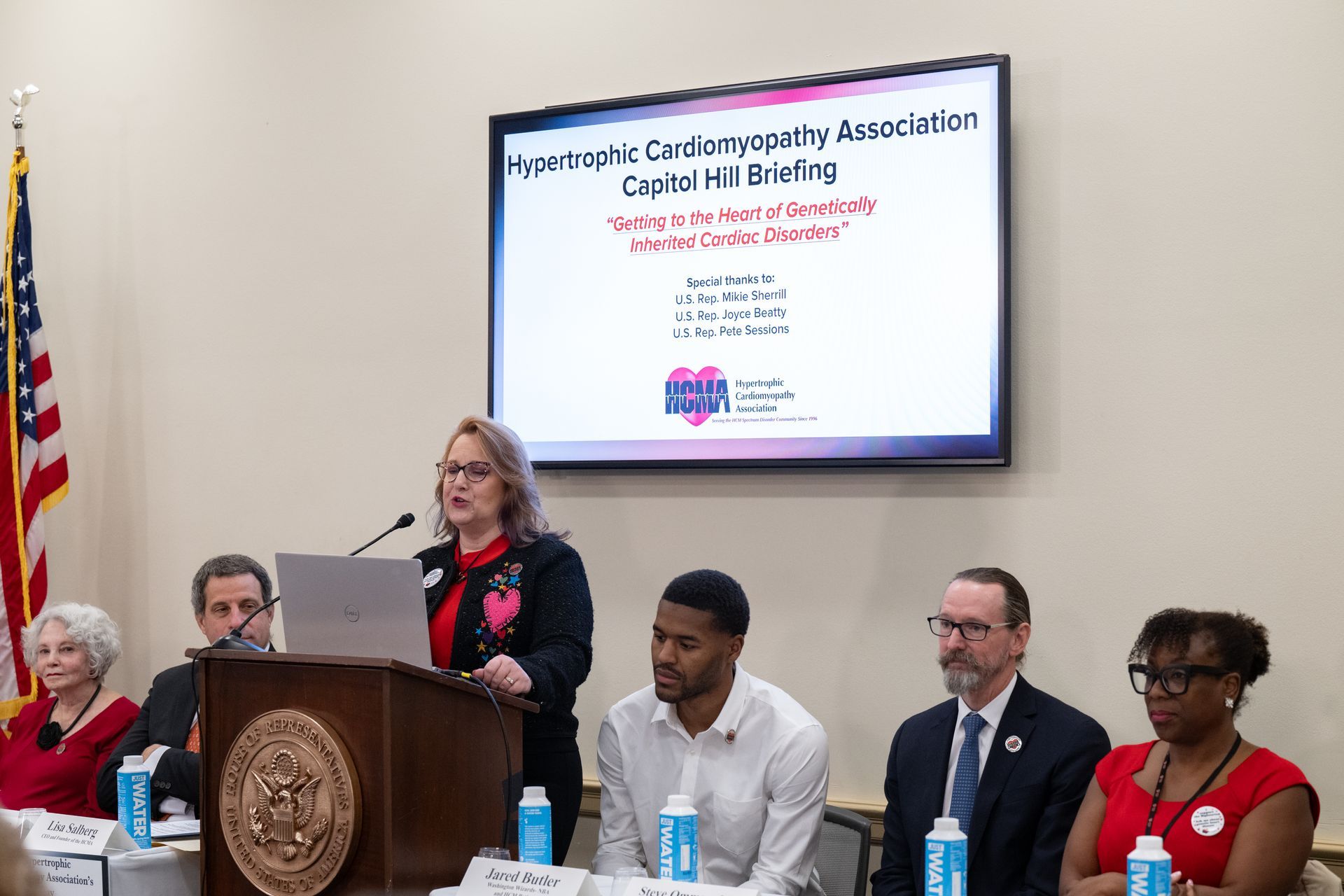Blood Clots
Overview: Blood clots stop bleeding from wounds, but they can be dangerous if they form in the wrong places.
When you cut yourself, blood eventually clots at the wound, and stops the flow of blood. So clotting is important to protect us from excessive bleeding. But clots also can form inside the body. This can be dangerous. Internal clots don't necessarily dissolve on their own. If they block blood flow in the brain, lungs, or heart, they can cause serious damage or death.
Background
Clot formation (coagulation) is complicated. Platelets - tiny cells that circulate in blood - activate a sequence of proteins and other blood components to form a clot. Deficiency in any of these components can slow or prevent clot formation. People with diseases like hemophilia are at risk from excessive bleeding. But a tendency to form clots too readily is also dangerous.
Why is clotting an issue in HCM?
Clotting can be a special issue for people with HCM. A major reason is that many HCM patients have periods of atrial fibrillation or atrial flutter. When these arrhythmias occur, the atrium beats ineffectively, so blood pools there. Clots can form as a result, especially in a part of the left atrium called the left atrial appendage (LAA). These clots sometimes travel to the brain and cause strokes. In fact, atrial fibrillation is a major cause of stroke.
There is a second way in which clotting can be of special concern for HCM patients. Heart failure - whether caused by inadequate filling (diastolic failure) or inadequate pumping (systolic failure) - can also lead to blood pooling, especially in the lower legs. This can cause clot formation, and these clots sometimes travel to the lungs. This is called a pulmonary embolism. This can cause severe problems and even death.
Many conditions can cause blood clots, including atherosclerosis, COVID-19, heart attack, and certain drugs. Symptoms of clots are not generally unique to clots. Shortness of breath, palpitations, and chest pain may be symptoms of pulmonary embolism or a clot in the atrium, but of course they are common symptoms of other heart problems too. Coughing up blood may be a symptom of a pulmonary embolism. Clots in the leg often cause local swelling, pain, redness, and warmth. You should seek medical care if you have those symptoms. Always seek care if you have new chest pain/tightness, or new difficulty breathing. And you should always seek care if you have stroke symptoms, including sudden vision changes, sudden weakness or numbness, confusion, trouble speaking or understanding speech, or trouble walking.
Treating clotting issues
Preventing clots from forming is a major part of the treatment of atrial fibrillation. Patients with afib are normally treated with anticoagulant drugs for this reason. Commonly used anticoagulants include warfarin (Coumadin), rivaroxaban (Xarelto), dabigatran (Pradaxa), and apixaban (Eliquis). Because the risk of clot formation is still substantial, even if you have not recently had recorded episodes of afib, it is strongly recommended to keep taking your anticoagulant. Warfarin is the oldest of these drugs, and is very effective. It is also much less expensive. Its drawback is that regular blood testing has to be done to see if you are getting appropriate levels of protection--the dose or your diet sometimes need to be adjusted. Home testing kits may be available for you. The other drugs mentioned do not require testing, but they are much more expensive.
If you take one of these drugs, injuries will make you bleed more. You will still form a clot when you cut yourself, but it happens more slowly. If you have a more serious injury causing bleeding, you should seek medical attention. The drugs used have antidotes and hospitals have them available. For this reason, it is a good idea for anyone taking one of these drugs to wear something like a medical alert bracelet that names the drug you take.
There are also drugs specifically aimed at preventing clots in the deep veins or pulmonary embolisms. These include edoxaban (Savaysa) and enoxaparin (Lovenox). Other drugs, like heparin, are used mainly in hospitals, to prevent clotting in connection with surgery.
If a clot is diagnosed, its treatment depends on its location and the patient's health. Besides anticoagulant drugs, besides anticoagulant drugs, there are other drugs used sometimes to break up clots. These are usually used only in emergencies such as strokes, heart attacks, pulmonary embolisms, and blockages of large blood vessels. Very large clots are sometimes treated surgically.
What can you do to make clots less likely?
You can take valuable steps to reduce the chance of clot formation. The first is to keep moving! Sitting in one place for a long time makes clot formation in the legs much more likely. This is why it is recommended to move around when on airplanes, car trips, or at desk jobs. It is also the reason walking is recommended after surgery. For many people, graduated compression socks are very helpful in keeping blood from pooling in the legs. Stay regularly hydrated. Keep your blood pressure under control. If you smoke, you already know you shouldn't, but the fact that smoking promotes clot formation should provide you with more motivation to quit! Exercise regularly. And if you have been prescribed anticoagulant drugs, keep taking them!
Bibliography
American Society of Hematology. (n.d.). Blood Clots. Blood Clots - Hematology.org. Retrieved March 19, 2021, from https://www.hematology.org/education/patients/blood-clots
Mayo Clinic. (2020, 29 May). Blood Clots. Blood clots - Mayo Clinic. Retrieved March 19, 2021, from https://www.mayoclinic.org/symptoms/blood-clots/basics/definition/SYM-20050850?p=1
Completed:
G. A. Fox, 1 April 2021

 Translate
Translate